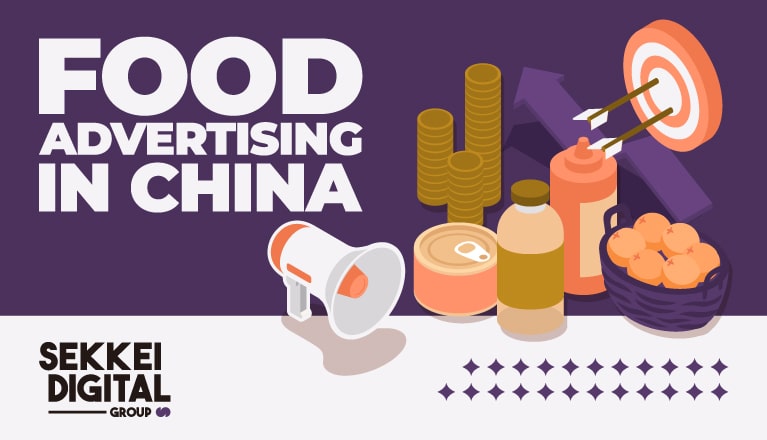As China continues to rely on imported food, foreign manufacturers and brands are now more eager to enter the local market. The only problem is, how can they convince Chinese consumers to patronize their products?
Advertising food products in China involves more than following specific market regulations or laws. As an international brand, you must also learn to adapt to the country’s unique digital ecosystem and changing consumer trends.
In this post, we’ll tackle how to launch online food advertisements in China and discuss how foreign brands can adapt to local advertising laws to avoid potential mishaps.
Overview of Online Food Advertising Landscape in China
China is now a global market leader in the food industry, generating over $1.6 billion in revenue. In the country’s FMCG segment, it’s been recorded that 31% of 2022 revenue came from online sales.
The increase in demand for food products in online sales channels comes after the booming popularity of social media and e-commerce platforms. These apps not only allow marketers to engage with their audience but also provide them tools to advertise and sell their offerings without leading the customers to another website.
The online promotion of food products in China operates closely with the general market regulation and digital advertising laws. Most of the guidelines food companies must follow often relate to food safety standards and false advertising claims.
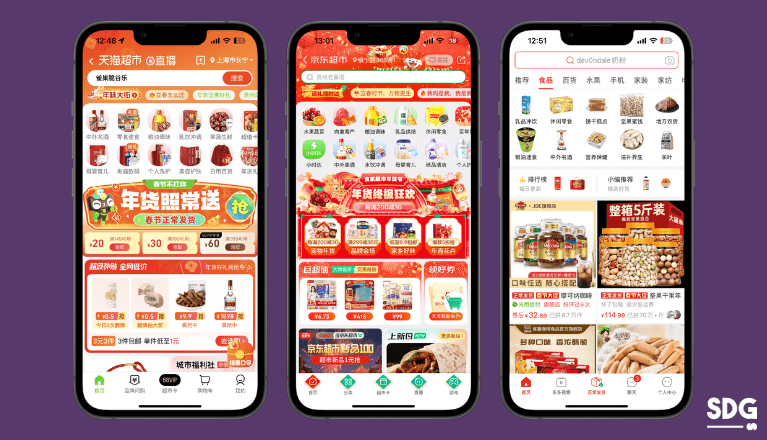
Food sections Tmall, JD.COM and Pinduoduo
Gone were the days when regular food advertisements on TV were the only way to reach out to potential consumers. In China, online marketplaces like Tmall, JD.com, and Pinduoduo are more than sales channels.
These apps are now powerful advertising platforms. Brands often use these apps to run targeted ad campaigns, leveraging their vast user data and promotional content formats.
Top social media apps also serve as an effective promotional channel for a food company trying to enter the Chinese market. Besides the ad formats these platforms offer, it’s also a place where you can work with popular KOLs in the industry through paid endorsements.
Dos and Don’ts in China’s Food Advertising Landscape
Abiding by China’s general market regulation can be challenging, especially for a foreign brand. To avoid penalties and other serious circumstances while advertising in China, here are a few guidelines you can refer to:
Avoid Prohibited Practices When Promoting Food Products
-
False or Misleading Content
If you look at the general advertising law implemented by the Chinese government, it clearly warns brands against using exaggerated marketing terms that could mislead their consumers. It includes terms like “the best,” “first,” or “highest level.”
However, this law goes beyond simple word plays. For example, YonHo Soybean Milk faced penalties in 2020 when their WeChat ads claimed that their product was a national gift of China.
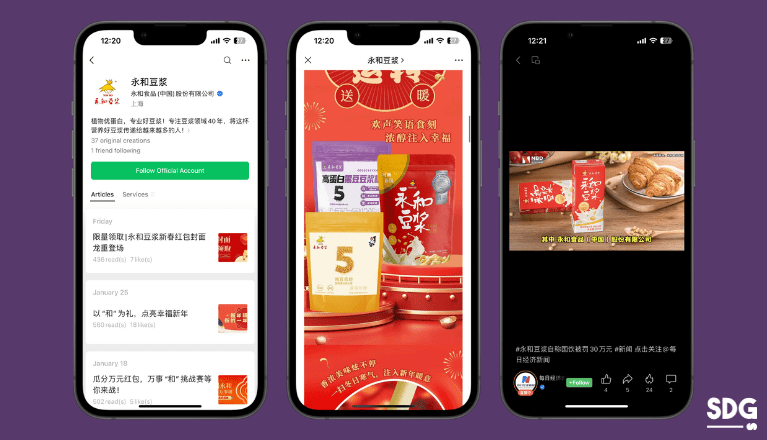
An advertiser may also be penalized for claiming false information about food additives. Most of these cases fall under the beverage category where brands advertise “zero sugar” or “zero calories” drinks.
Moreover, advertising food products as “Organic” when the goods have not yet been approved by the Certification and Accreditation Administration (CAA) is also prohibited. The fines for disobeying these regulations can range from 200,000 to 2 million yuan, with potential revocation of business licenses.
-
Usage of National Organizations in Food Ads
Besides food safety and health claims, an advertiser may not use national symbols or culturally significant phrases. These advertisements, online or not, should also be free of personalities or figures related to the government.
Advertisements from 3W Coffee faced the consequences of disobeying this regulation when the brand adopted the marketing message “Same as the Prime Minister’s Coffee,” accompanied by the photo of a state government official.
-
Hiring Minors to Advertise Food Products
If you notice, some parts of advertising regulations in China directly refer to safeguarding the well-being of the younger population. The same principles are applied when seeking brand ambassadors for your paid advertisements.
In 2018, the New Zealand-based company A2 Milk got in trouble when they collaborated with famous actress Hu Ke and her son for their website and social media ads. Unfortunately, the child they featured in these promotional materials is under ten.
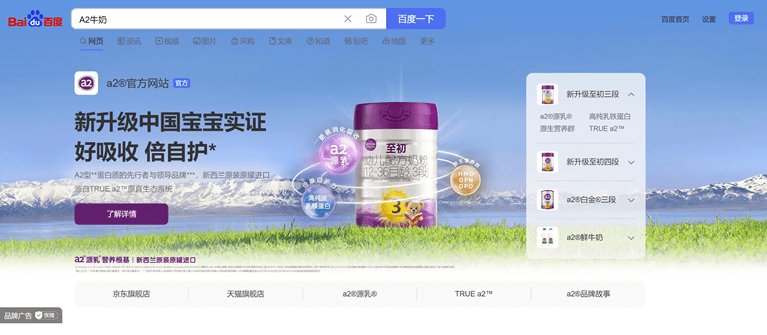
Because of these online advertisements, A2 Milk paid a penalty amount of around $20,000 in accordance with local regulations. Fortunately, this event didn’t result in the revocation of their business license. The brand continues to thrive in China and has expanded into different product categories.
Follow Specific Restrictions in Food Advertising
-
Do not claim Disease Prevention and Therapeutic Effects
Regardless of how genuine your selling points are, your food ads should be free of claims of medical treatment or therapeutic effects.
Since health and wellness are booming trends in the country, these regulations are implemented to avoid confusion between the foods promoted and the actual pharmaceutical or medically approved goods.
The use of misleading medical language will affect not only the brand in question but also the advertiser in the event of advertisement collaborations. One example of this unfortunate mishap is when Jing Tian promoted pressed candies made of fruits and vegetables and claimed weight loss effects.

Source: ChemLinked
After the advertisement review, the actress was fined $1.08 million and was prohibited from doing any endorsements for three years. Meanwhile, Infinite Free (the product’s manufacturer) also faced repercussions, with the controversial items removed from China’s major e-commerce platforms.
-
Be extra cautious advertising Baby Food Products
When advertising healthcare food for infants, foreign advertisers must avoid claiming that their products are suitable for full or partial substitution of breast milk. Adding this to your brand message could lead you to the same penalties as Yashili.
This issue came after the brand released search engine advertisements where their brand appeared on top of results when the keyword “the most like breast milk” was entered. The company faced a fine of RMB 200,000 and was asked to take down these ads.
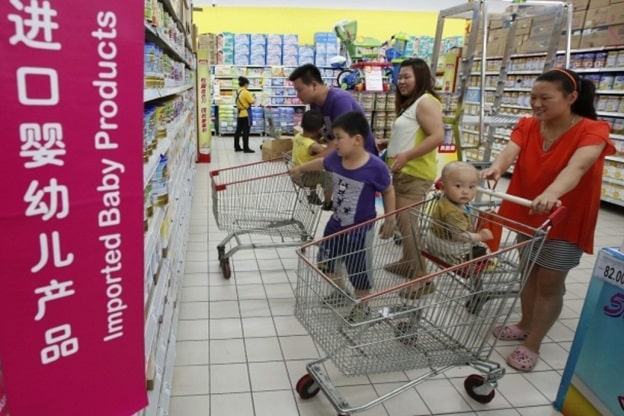
Source: SMCP Post by Reuters
A major turning point in consumer consciousness regarding baby food products in China was the 2008 melamine scandal. Melamine-tainted milk powder resulted in six infant deaths and approximately 300,000 babies falling ill.
This unfortunate event has made the Chinese consumer market extra sensitive and skeptical about how baby food products are advertised. It has also increased demand for foreign infant-related goods due to its perceived higher quality and food safety standards.
-
Never advertise pre-approved goods in China’s food industry
Advertising health-related foods in China is perhaps one of the most complex endeavors a foreign marketer may encounter. The reality is you’ve got to get a green light from the authorities first before promoting any food for special medical purposes.
In 2020, Abbot was penalized when they released a Douyin video advertisement with Xu Zheng, a famous Chinese actor. Although the ad was creative and engaging, their product, PediaSure, is not just any food item. It’s formulated for medical purposes.
According to ad regulations, the promotional content must obtain prior approval from the local Administration for Market Regulation (AMR) before posting. These rules also say you can’t use celebrities or influencers to endorse such products.
Abbott learned this the hard way and ended up with a hefty fine of RMB 1.94 million from the Shanghai AMR’s Pudong Branch.
Importance of Understanding China’s Regulatory Landscape
China’s approach to regulating food-related ads is deeply rooted in its commitment to public health and consumer protection. Failing to adhere to these regulations will result in consequences. Penalties range from hefty fines to a complete ban on advertising and sales channels, not to mention the potential long-term damage to a brand’s reputation.
Understanding China’s regulatory landscape goes beyond legal compliance. It’s about respecting the consumer and the cultural context. It signals a commitment to ethical marketing and building trust with the Chinese audience.
Best Practices for Advertising Food Products in China
1. Keep Your Local Social Media Accounts Active
China has over 1.03 billion social media users, making it an ideal platform to launch advertisements for food brands. An active presence on platforms like Weibo, WeChat, and Douyin can help increase your brand’s visibility.
These social media apps often have high engagement rates. So, as long as you execute effective advertising strategies, chances are you can attract new consumers to purchase your products. Regular updates and engagements on these platforms keep the brand locally relevant.
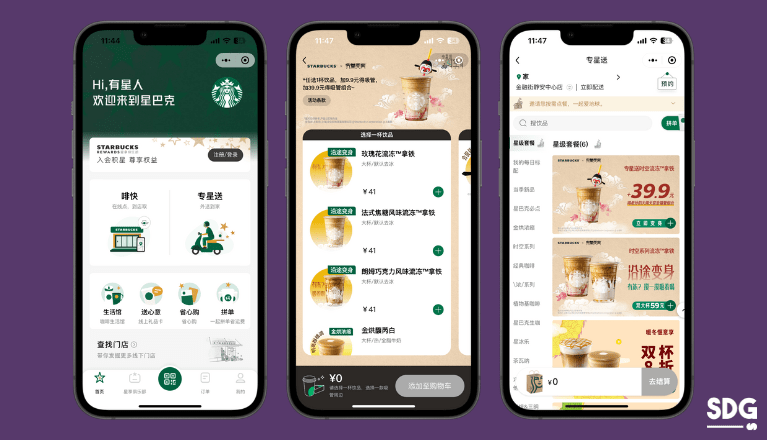
Starbucks WeChat Mini Program
Starbucks managed to achieve this social media success when they decided to advertise their products on WeChat. In 2017, nearly a third of its local purchases came through this online channel.
The global brand also launched a paid social selling campaign in the form of a WeChat mini-program. Through this advertising model, Starbucks encouraged its local customers to buy their products by allowing them to send food and drinks as “gifts” to their friends and family.
2. Utilize Major E-commerce Platforms
Unlike traditional online marketplaces, today’s e-commerce platforms also have social features. This trend is especially prevalent on popular platforms like Tmall, JD.com, and Pinduoduo.
Boosting your product listings with ad formats on these platforms will not only yield potential revenue but also an increase in brand exposure.
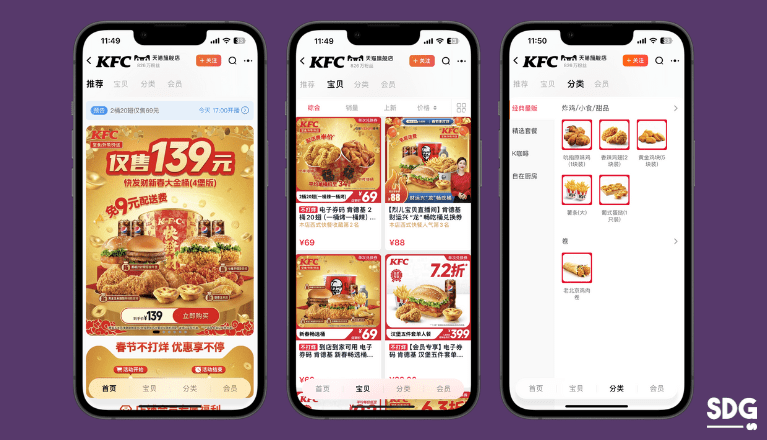
KFC brand store on Tmall
KFC is among the best examples of successful Western food brands in China. The main reason for this is their willingness to adapt to China’s evolving digital business landscape.
In an attempt to resonate with the younger generation, the brand launched campaigns on e-commerce platforms like Tmall. Through this, KFC was able to implement more accessible ways to purchase their products with digital ordering and payment systems.
3. Localize Your Brand to Resonate with Chinese Consumers
To avoid the hassle of going through a stringent advertisement review process, the best business move we can recommend is to localize your brand. Nestlé understood its importance, which led to the brand customizing its product portfolio according to local consumer behavior and tastes.
All of the company’s marketing and advertising materials also adopted their Chinese name, 雀巢 (què cháo). It means sparrow’s nest, seemingly inspired by the brand’s logo. With these localization efforts, Nestle products became a familiar name in the Chinese consumer market.
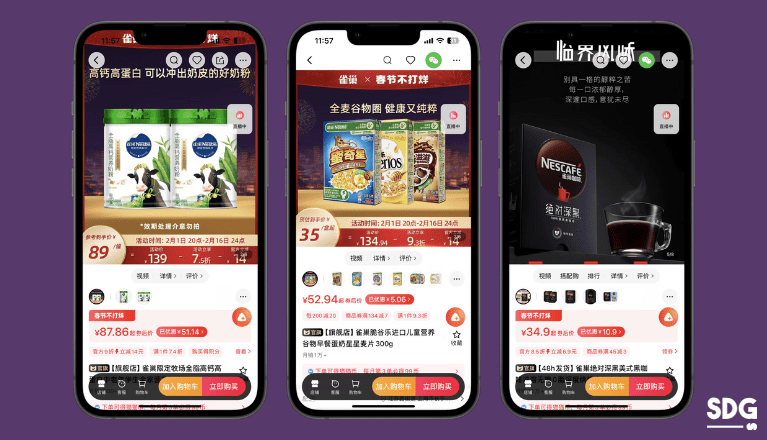
Nestle localized products for China
Localizing also means avoiding absolute terms that may mislead consumers in your advertising materials. You must ensure the brand’s marketing assets are professionally translated and culturally adapted. Don’t forget that visuals should align with local aesthetic preferences.
4. Work with Popular KOLs in China’s F&B Market
By now, it’s not a secret that Key Opinion Leaders wield significant influence in China. Local customers place high trust in these individuals, viewing them as credible sources of information.
With the right KOL marketing strategy, these online personalities can add authenticity to your brand’s image. Their endorsement is often seen as a personal recommendation, leading their followers to check out the products they promote.
The SDG team had first-hand experience in utilizing KOLs for launching marketing campaigns. In our work with COOP, we successfully launched an O2O cooking class with influencers and managed to garner traffic and followers for the brand.

SDG’s work with COOP: O2O KOL Campaign Event
5. Build A Solid Presence on Online Review Sites & Forums
In China, platforms like Dianping and Zhihu are similar to Yelp and Quora in the West. Foreign food companies can leverage consumer reviews and discussions from these apps.
Marketers can actively encourage satisfied customers to leave reviews. As user-generated content is quite prevalent in China, positive consumer experiences shared on these platforms can significantly influence potential buyers.
Managing your online reputation on these sites can also help mitigate any negative feedback. It involves addressing customer complaints promptly and efficiently.
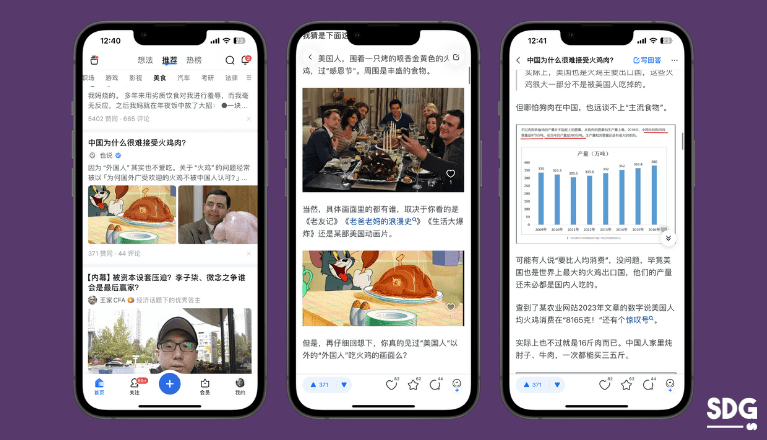
Food topics on Zhihu
Foreign advertisers can participate in relevant discussions on these forums. For example, if you’re marketing organic food products, engaging in conversations about healthy eating on Zhihu can enhance your brand’s visibility and credibility.
6. Invest in Quality and Safety
Given the history of food safety concerns in China, highlighting the quality of your products can be a significant trust-builder in the F&B industry.
Obtaining relevant certifications and being transparent about sourcing and ingredients can increase a brand’s credibility. Demonstrating food safety in your advertising content will also help you set products apart from your competitors.
7. Pilot Small-Scale Food Ads
You can conduct small-scale advertising campaigns in China to test the waters. This approach allows brands to gather data and insights, which can be used to refine more extensive campaigns.
Pilot campaigns can provide valuable feedback on consumer preferences and advertising effectiveness, enabling brands to adapt their strategies accordingly.
Your Trusted Digital Advertising Partner in the Chinese Market!
Launching food advertisements in China may seem like a complex task, especially for foreign marketers. However, it’s worth noting that the key to a successful promotional campaign is always understanding the local consumer market.
At Sekkei Digital Group, we understand the changing preferences of Chinese audiences. We also have enough industry experience to help your brand navigate the legal landscape of China’s digital business landscape.
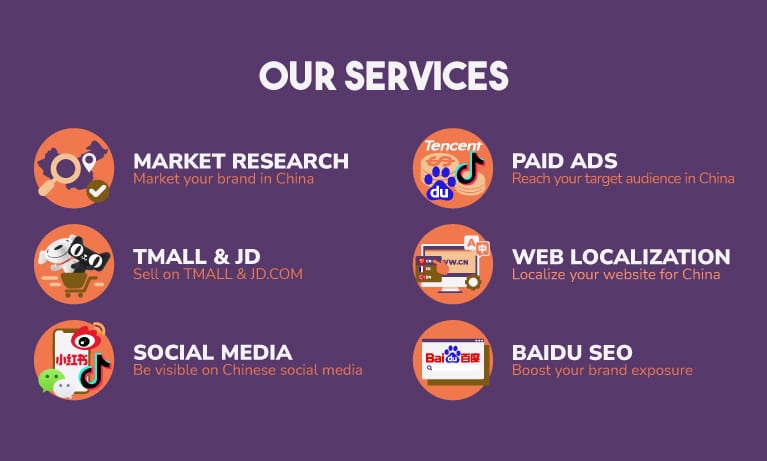
Whether it’s crafting compelling advertising campaigns, harnessing the power of SEO and social media, or making waves with KOL collaborations, we have the digital solutions you need. Contact us today, and let’s start working together!
References:
Food Advertising in China: “Do’s and Don’ts” From Recent Cases
9 Marketing Takeaways from Food Brands in China
IN CHINA, GET YOUR FOOD ADS RIGHT … OR PAY THE PRICE

